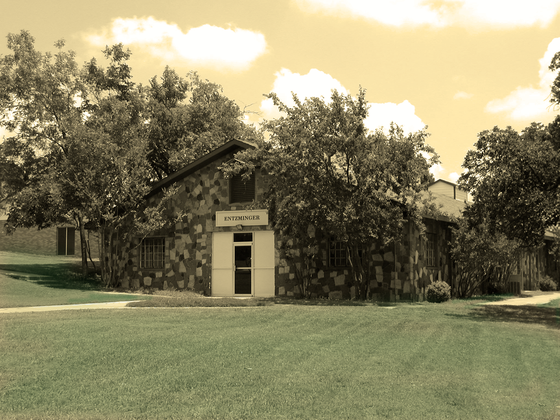Royal Ford Stable
This stable with its French-Norman inspired roof, original hopper windows and interior oak paneling was built to house the prize racehorse Royal Ford. Royal Ford was purchased for $110,000 from oilman, cattle baron and Arlington Downs owner W. T. Waggoner and trained by Jack Jarvis, inventor of the first electronic starting gate. The training and breeding evidently paid off; Royal Ford’s foal, Heelfly, beat Seabiscuit in 1940. The sandstone exterior with the name Royal Ford engraved at the entrance and the original watering trough on the south side, remain virtually unchanged.
Horse Barn
Amazingly still in use, but now as classrooms, the former horse barn is a large building with three cupolas on the roof peak, an interior of hollow tile faced with stone, and an exterior of rustic woodbine sandstone. The boxed eaves accentuate the original metal casement windows. The original purpose of the barn was housing for racehorses, two of which were Colorado Lad and Valdina Lamar. There were twelve stalls, each twelve feet wide. Hard-packed caliche formed the floor. Large doors at each end of the structure allowed entrance from either direction. The loft area was used as a bunk house for workers and jockeys.
 Top O' Hill Terrace
Top O' Hill Terrace






